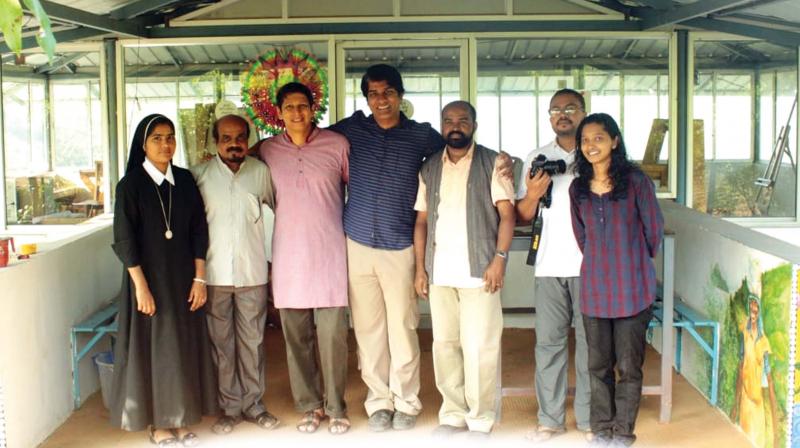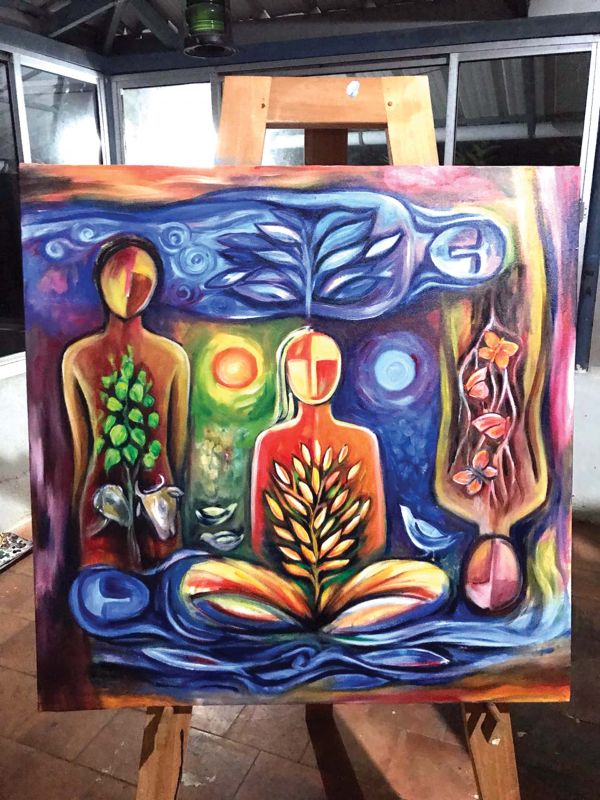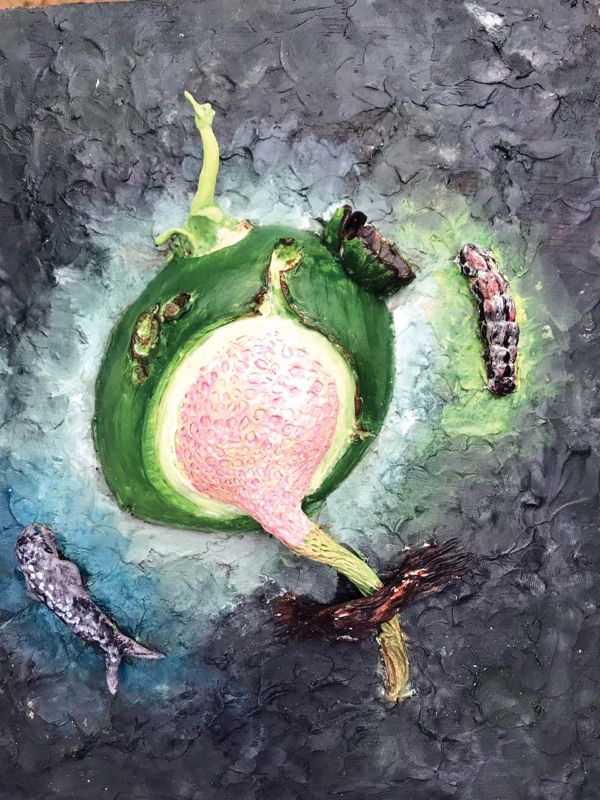Fostering humanity through art

What is the root cause of disparity and subsequent violence? If you pose this question to the seven artists — five priests, a nun and an art student — who gathered at the Palette People Art Residency in Vagamon for an art camp, their answer would be ‘lack of mercy’. In their words, disparity is found in narrow minds, dividing fellow beings on the basis of politics, caste, creed and colour. The theme of the camp held from May 23 to 26 was ‘Unity in Diversity – Witnessing Mercy’. Organised by KCBC, the camp saw Aneeta Rose Abraham, Sr Sandra Soniya, Fr Ebey Edassery, Fr Sunil Jose, Fr Joyson Palliparambil, Fr Roy Thottathil and Fr Antony Joseph Nangelimalil translating their thoughts onto canvas. All of them, except Fr Sunil, have learnt art at the academic level. Sunil is an autodidact.
 Artists with their paintings.
Artists with their paintings.
“It was Fr Jolly Vadakkan (secretary, KCBC Media Commission) who suggested this idea and we embraced it,” says Fr Joyson about the theme. The aim of the camp was to let the participants spend some quality time together, discuss various subjects and bring out fruitful solutions. “This subject is quite relevant in the current scenario,” adds Joyson. Among the seven creative pieces, six are paintings and one is sculpture. Interestingly, they have not included any church-related insignias in their works, thus asserting the value of unity. And they have all drawn inspiration from nature, the ultimate teacher, to portray mercy and unity.

“Nature teaches us to be beautifully diverse,” says Joyson, who has chosen terrains to explain unity in diversity. In his painting, one could see different terrains fringed with dews merging on the horizon. “We need to have an extended vision to see this converging point in a diverse situation,” he says. Aneeta, who did a five-piece sculpture using natural objects such as guavas and dry leaves along with m-seal, Spanish clay and plywood, explains the deed of giving oneself for the betterment of others through her work. “These days, we see competition everywhere. Look at nature, nothing competes there; instead one gives one's life for the other. That is mercy,” she says. Fr Antony’s work discusses identity crises — the state of so many identities imposed on a human being in his/her life. His painting has a bamboo and his head pops out of it. “I bring myself into my works,” he says.

“There are different identities inside a person and it changes according to the context. For instance, if I am a Malayali here, my identity changes to Indian when I go outside. Am I all these? This question has been in my mind for a long time. My original identity is ‘I am’ and it ends there. But I cannot remove all those labels plastered on me though I try to shed them all,” he says. By adding the imagery of the bamboo, he says that both the bamboo and he are equal. Fr Sunil has adopted an abstract treatment for his painting that speaks of the struggles of a woman. It also has curtains that blur our vision from seeing the plight of other beings and restrict us from reaching out for them. “We are living in an era of social media where everyone has a label. If we were least bothered about the religion or politics of our peers back during those days, now everyone is segregated based on these,” he says. His painting exhorts the viewer to remove that curtain and be merciful to others.
Flower is the core element of Fr Ebey’s painting. He has equated the life of a human being with that of a flower and the transition is shown through change in colour tones. “Nobody cares about the fallen leaves. Our older citizens are like fallen leaves,” says Eby, who found the flower on the premises of the residency venue. He has put the flowers on a blue background amidst fog, showing shades of life. In the case of Sr Sandra, mangroves struck her mind while travelling through Kannur. She, who has the habit of clicking photographs for future references, photographed the mangroves too and has given them life on canvas at the residency. But the roots of the mangroves resemble the feet of a vulture. Yes, the mangroves signify protection but the feet of the vulture shows saviours turning into annihilators.
The painting by Fr Roy has four figures, male and female. The hues are bright, and inside their bodies, we see various elements of nature. The central figure is meditating, which indicates balance and spirituality. “The canvas is square-shaped, which signifies mandala – a symbol of perfection. Here, every little being is unique, but inter-linked. There is harmony,” says Roy. Quiz them what brought them to art, they say, it has been their passion since childhood. They feel art allows them to communicate to the world. Like Sandra says, it is an extension of their missionary activities. “Though I am sister, I am part of the system. I want to stand for society through my works,” she says. The team plans to hold an exhibition of their works.

